Introduction
Plaster study casts are the ‘‘gold standard’’ in orthodontics. The use of dental study models is an integral part of both dental practice and dental research. Plaster casts of the dentition remain a recognized tool for orthodontic diagnosis and treatment planning playing an important role in orthodontics, prosthodontics, orthognathic surgery, extensive restorative work as well as for teaching purposes.
To achieve all these objectives we present here a simple and economical way to fabricate study models with the help of an indegeneously designed vertical model occluder (base former).
Procedure:
1. A simple door bolt (8”) is cut in the centre on its flat back surface (Fig 1).
2. An iron rod (4”) is taken which is bent at 90 degrees at 1 inch distance from one end. The diameter of the rod is such that it fits snugly into the door bolt from the flat surface (Fig 2 and 3).
3. To the above assembly a flat aluminium sheet (5”x 4”) is welded in the centre (Fig 4).
4. A black glass slab (5”x4”) of same size as that of the aluminium sheet is attached underside to the aluminium sheet using a silicon adhesive.
5. This whole assembly is attached to wooden box (9 “x9”) having flat and plain base (Fig 5).
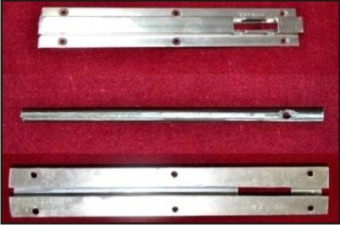 | Figure 1
 |
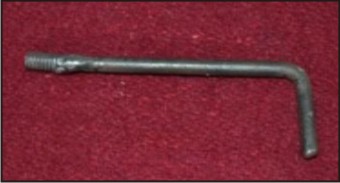 | Figure 2
 |
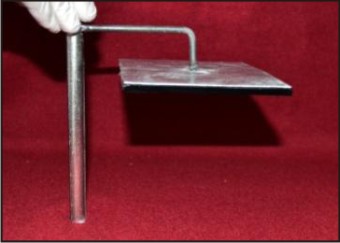 | Figure 3
 |
 | Figure 4
 |
 | Figure 5
 |
Fabrication Of Bases
While fabricating the maxillary base; the occlusal surfaces of maxillary cast should be touching the flat surface of the glass slab and flat surfaces of the maxillary & mandibular bases should be parallel to each other. (Fig 6a, 6b).
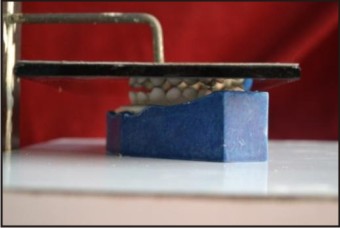 | Figure 6a
 |
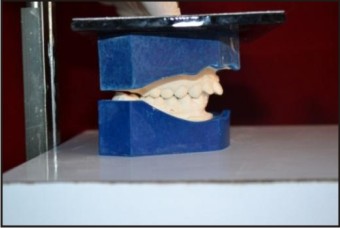 | Figure 6b
 |
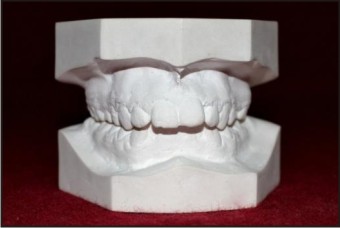 | Figure 7a
 |
 | Figure 7b
 |
Alternatives to using plaster study casts have been suggested ranging from photocopies, photography, holograms to digitization of points from the plaster study cast. With models in occlusion the backs of the upper and lower base should have flush plane and should have 90 degree angle between their base and back. The base of the upper and lower model is parallel to the occlusal plane. (Fig 7a, 7b) Since the occlusal plane is not always horizontal in the patient, trimming study models in this way does not produce a true model whereas a true model should represent the position of the dental arches in space.
Conclusion
The indegeneously developed vertical model occluder (VMO) in our department for occluding the upper & lower study models as per guidelines is at par with commercially available model occluders with the advantage of being inexpensive, easy to handle and with the same precision as commercially available versions of VMO.
References
1. Proffit WR . In: Contemporary Orthodontics. 3rd ed.. St. Louis, MO: Mosby; 2000.
2. Rheude B , Sadowsky PL , Ferriera A , Jacobson A . An evaluation of the use of digital study models in orthodontic diagnosis and treatment planning. Angle Orthod . 2005; 75:292–296.
3. Chad Callahan, P. Lionel Sadowsky, Andre Ferreira. Diagnostic Value of Plaster Models in Contemporary Orthodontics. Seminars in Orthodontics, 2005, 11(2):94-97.
|